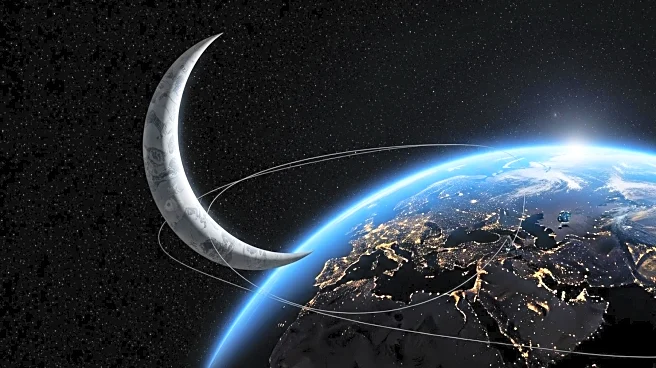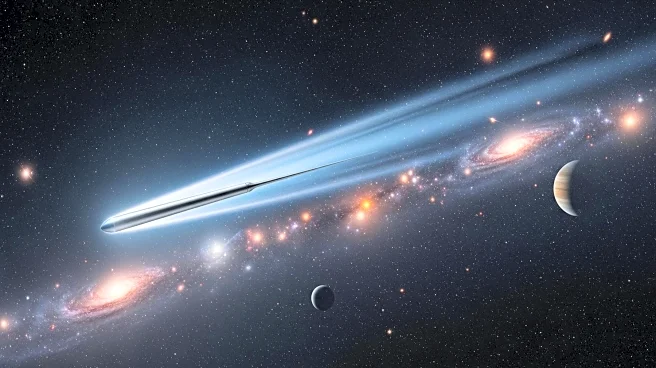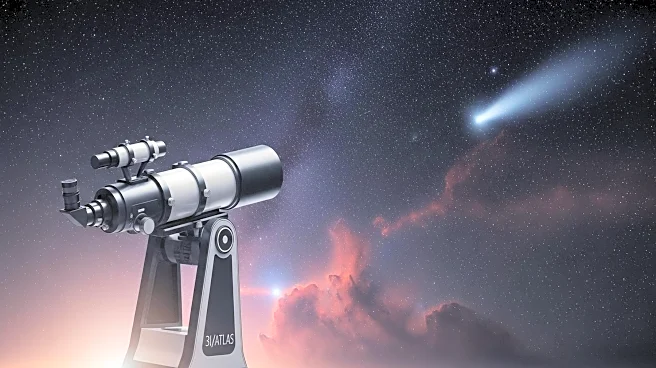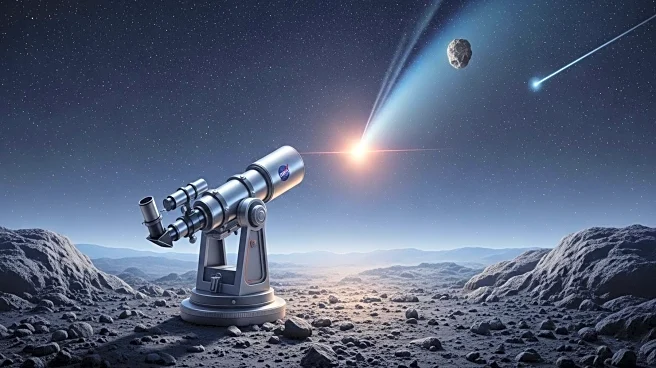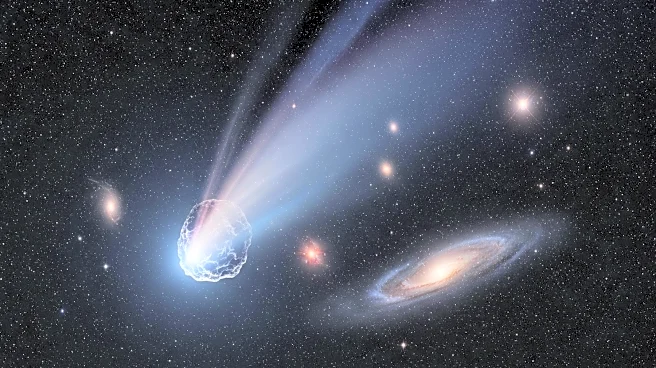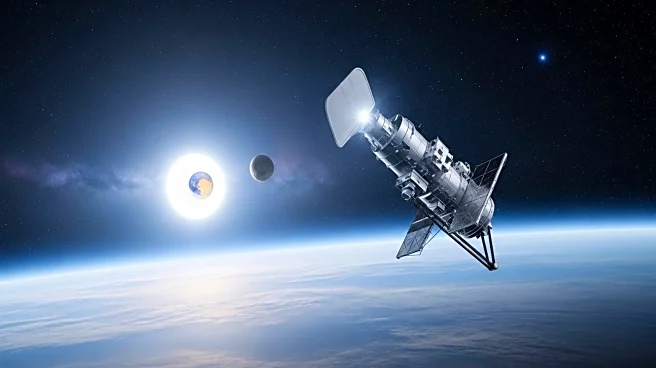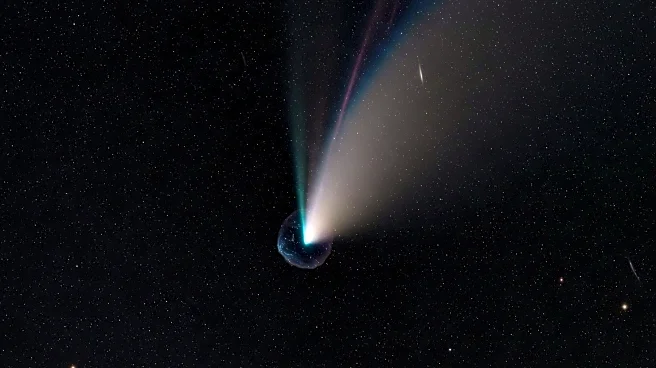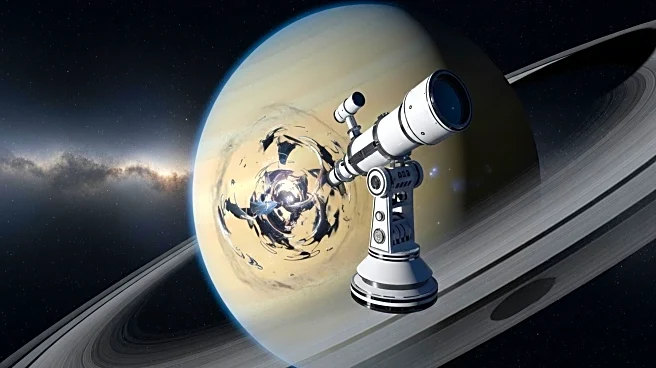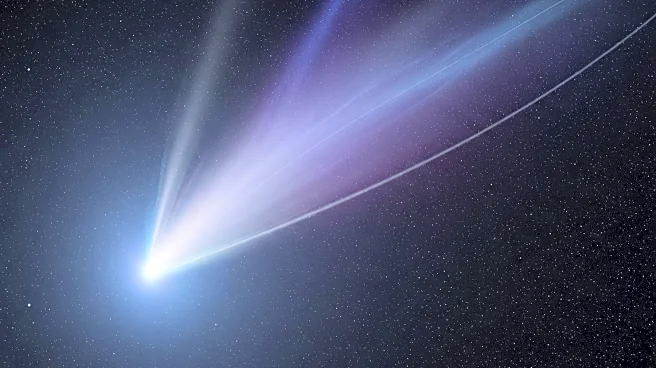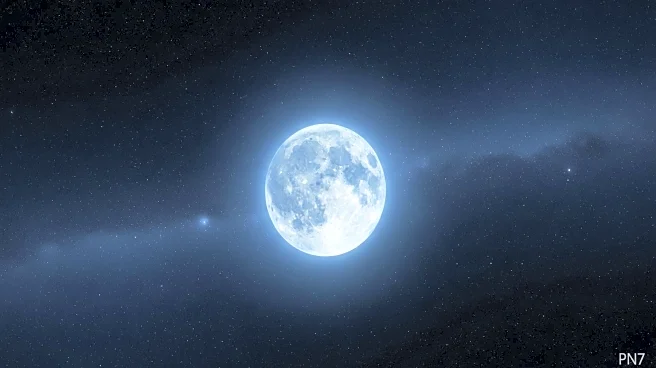What is the story about?
What's Happening?
Astronomers have discovered a tiny quasi-moon, named 2025 PN7, that has been orbiting the sun alongside Earth for several decades. This celestial body was first detected by researchers at the University of Hawaii during the summer. Quasi-moons differ from regular moons as they are asteroids that travel in tandem with Earth along the same orbital path around the sun, rather than being gravitationally tethered to Earth. The quasi-moon 2025 PN7 is estimated to be approximately 60 feet in diameter, with some predictions suggesting it could be over 120 feet. It is believed to have joined Earth's orbit around 60 years ago and is expected to break away by 2083. The discovery adds to the total of eight known quasi-moons orbiting with Earth.
Why It's Important?
The discovery of quasi-moons like 2025 PN7 is significant as it provides astronomers with valuable opportunities to study these celestial objects over extended periods. Unlike most asteroids, which are visible for brief windows, quasi-moons offer a scenario for long-term research due to their periodic return to Earth's vicinity. This allows scientists to gather extensive observational data, enhancing our understanding of the Solar System. The ongoing study of quasi-moons can lead to groundbreaking research, as demonstrated by missions like China's Tianwen-2 probe, which aims to land on a quasi-moon and return geologic samples for further study.
What's Next?
Astronomers will continue to monitor quasi-moons like 2025 PN7 to study their interactions with Earth and gather more data. The periodic return of these asteroids to Earth's neighborhood allows for continued observation and research. Future missions may focus on landing on these quasi-moons to collect samples, further enriching our understanding of their composition and behavior. As technology advances, the ability to detect and study such small and dim objects will improve, potentially leading to more discoveries in the future.
Beyond the Headlines
The discovery of quasi-moons highlights the dynamic nature of the Solar System and the surprises it holds. These celestial bodies offer unique insights into the gravitational interactions and orbital dynamics within our cosmic neighborhood. The study of quasi-moons also raises questions about the potential for similar objects in other planetary systems, expanding the scope of astronomical research beyond Earth.
AI Generated Content
Do you find this article useful?
